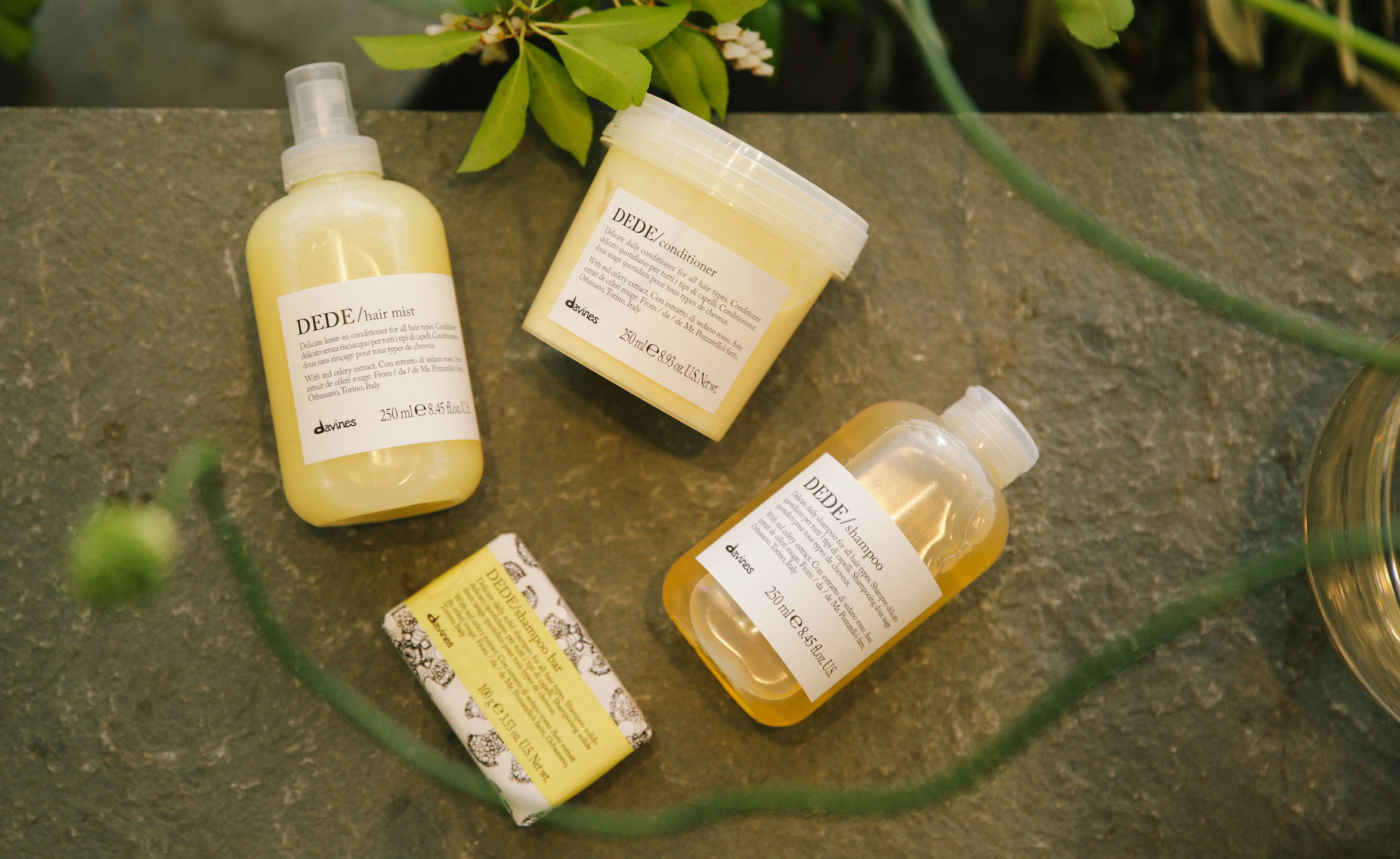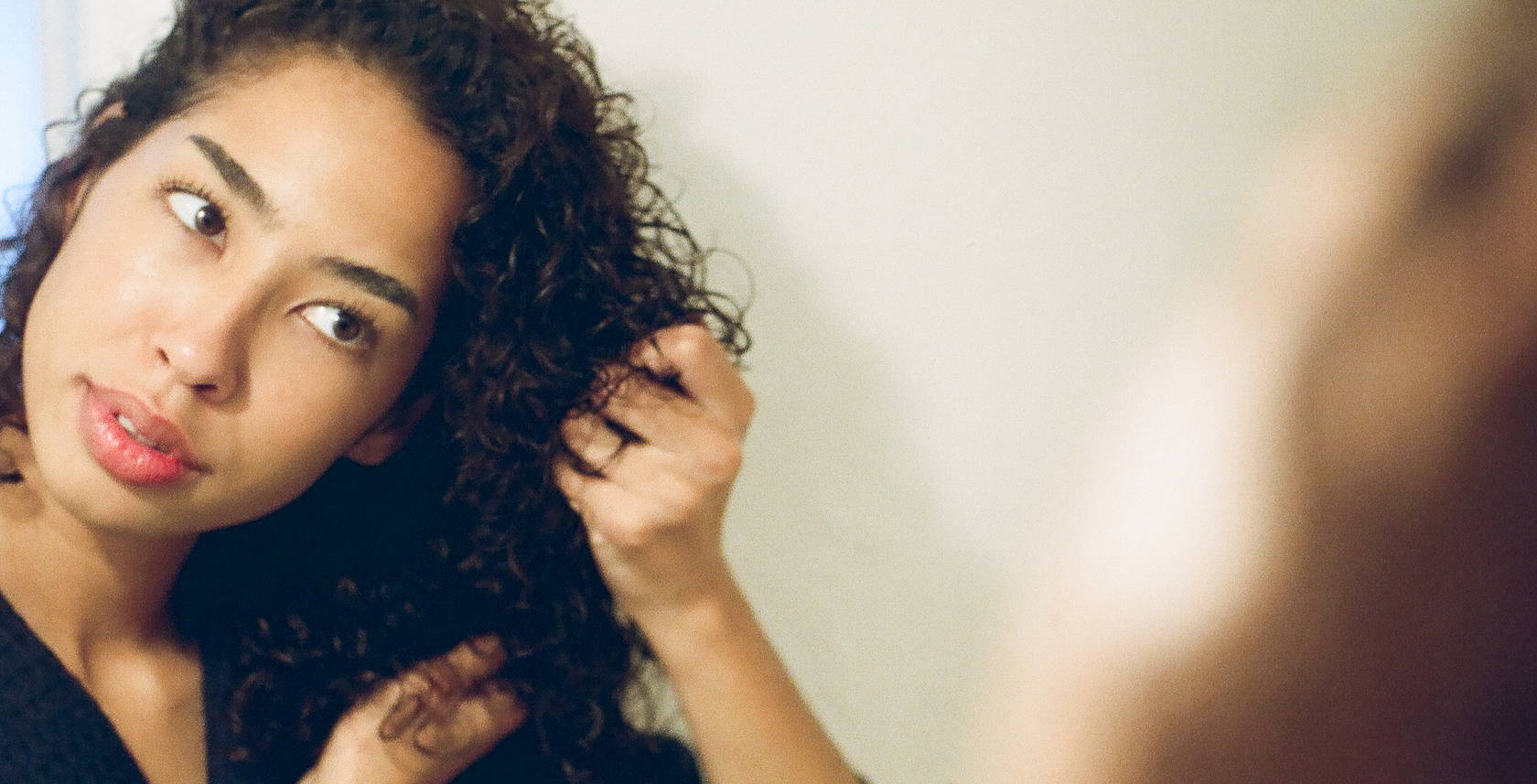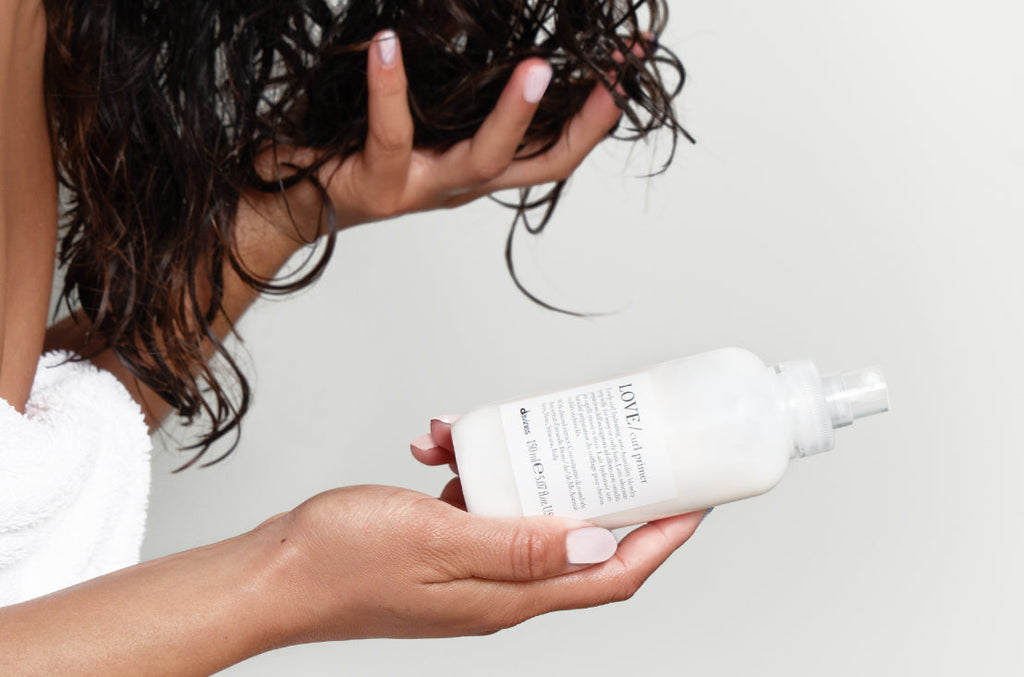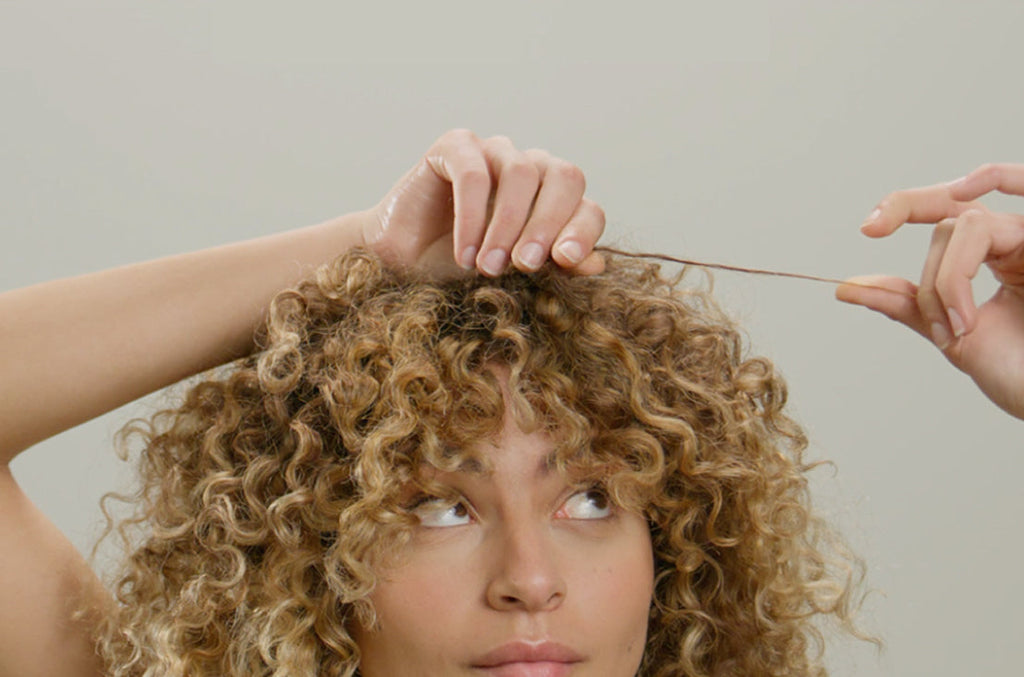Pay with Klarna
Free Carbon Neutral Shipping On Orders $75+, Plus Free Samples!
Pay with Klarna
Free Carbon Neutral Shipping On Orders $75+, Plus Free Samples!
When it comes to curly hair, two key factors determine the health of your strands; protein and moisture. And finding the right balance between the two is crucial for maintaining strong, hydrated, healthy hair and defined curls. But figuring out the right protein moisture balance can be a challenge. Too much moisture will leave your hair limp, mushy and lifeless while too much protein can cause it to be brittle and straw-like. So how exactly do you figure out whether your hair needs more protein, moisture or is already perfectly in balance? We’re telling you everything you need to know about protein overload hair vs moisture overload — plus the best tips and products for dealing with both! Read ahead for all the moisture and protein details.
Your hair is mostly protein. You know it as keratin, which is a specific protein. Keratin is necessary to keep your hair healthy and strong. But everyday things like hair products, heat and the environment all do damage to your hair, causing a loss in keratin. This protein deficiency causes your strands to get weak, brittle, and dry. But a protein overload can cause similar symptoms. A protein overload occurs when there is too much protein in the hair and too little moisture; and moisture overload (or protein deficiency) occurs when there is too much moisture and too little protein. Moisture overload is typically caused by using too many moisturizing products or not properly balancing them with protein treatments. It’s important to differentiate the two to treat your hair accordingly. The signs of protein overload include hair that feels rough and straw-like, lacks elasticity, and is prone to snapping. While dry hair may be a symptom of protein overload, if your hair has lost its natural elasticity and bounce, or you’re experiencing more oily hair than normal, it’s likely moisture overload. Other symptoms of moisture overload include a lack of definition and curls that struggle to hold their shape.
So what does protein overload hair look like? Protein overload in hair can be a frustrating issue, often characterized by hair that feels stiff, brittle, and lacks its usual elasticity. The first step in diagnosing protein overload is to pay close attention to your hair's condition. Your hair will feel extra dry, accompanied by breakage and a loss of curl pattern. A simple test to tell if you're dealing with protein overload is to take a strand of your hair and stretch it. If it feels dry and brittle and snaps almost immediately, you’ve got a protein overload and you need to adjust your hair care routine accordingly. More on that below.

You may be wondering how to fix protein overload in hair when protein is essential for maintaining strong, healthy hair. Let’s take a look at what causes protein overload in hair.
A protein overload is caused by using too many protein-based hair products or treatments. You’ll see protein listed in the ingredients as hydrolyzed collagen, wheat quinoa, soy protein, keratin, oat flour, and amino acids. Treat protein overload by soaking your hair in regular warm water. Afterwards, cleanse with a clarifying shampoo. The initial soak will eliminate excess oils and buildup, while the clarifying shampoo breaks down the proteins bonded to your hair. Incorporate moisture-rich products into your hair care routine and deep condition with a hair butter regularly. It’s also crucial to temporarily avoid products with high protein content and opt for gentler, sulfate-free shampoos and conditioners to prevent further protein buildup. You can also opt for co-washes rather than shampoo to keep your curls hydrated. Moisture will bring the shine and elasticity back to your hair making it look and feel healthy and strong again.
Moisture overload in hair can also be a common concern for those with curly, wavy, or dry hair types. While hydration is essential for maintaining healthy locks, it's possible to go overboard, leading to limp, weighed-down, and unmanageable strands. if your hair has lost its natural elasticity and bounce, this could be a clear indicator that it's drowning in moisture. Curls that lack definition and struggle to hold their shape is another red flag. An easy way to tell if you have a moisture overload in your hair is to take a strand of your hair and stretch it. If it stretches very far, feels mushy and then snaps, your hair is over-moisturized. Another consequence of too much moisture is a condition known as hygral fatigue. This is an extreme form of moisture overload that happens when the cuticle is damaged due to excess moisture entering and leaving the hair shaft too frequently. High porosity hair is more likely to experience this. Hair with hygral fatigue will not have elasticity and will feel mushy.
Too much of anything can be a bad thing — including moisture. Although like protein, moisture is a key factor in healthy strands, moisture overload in hair can leave it limp, lifeless, and weighed down. It occurs when the hair shaft becomes excessively saturated with water or moisture-retaining products, like deep conditioners and leave-in treatments. Moisture overload tends to affect those with high hair porosity, causing it to look limp, stringy, and greasy. To combat it, clarify regularly and go longer between washes. More washes means using more products- and more moisture. Avoid using heavy conditioners and leave-in creams and incorporate protein-rich products into your hair care routine. Protein treatments help to strengthen the hair shaft and restore its natural structure, alleviating the symptoms of moisture overload. Go easy on the extra styling products post-wash for a few weeks and slowly reintroduce them back into your routine. Avoid leaving your curls wet for too long and either air-dry or diffuse them to keep moisture overload at bay.
Mash 3 overripe bananas into a smooth, thick paste. Add them to a blender with 2 tablespoons of raw honey and 1 tablespoon of coconut oil. Puree it for 15 to 30 seconds. Work it in sections, covering all of your hair and rubbing it into your scalp. Cover your head with a shower cap and let it sit on your hair for 30 minutes.

While protein is essential for strengthening hair, an overabundance can make it stiff and prone to snapping. Protein overload usually occurs as the result of over-doing trying to fix hair damage. You do a protein treatment, but you’re also using products with proteins in them, and not balancing it out with enough moisture. Before you know it, you’re in protein overload. It’s important to read the ingredients in every product you put in your hair. If it contains protein, take note so you aren’t putting multiple protein products in your hair. Just like protein, moisture is a must for strong, healthy hair. But using too many products that contain moisture can leave your strands in a weakened state. Avoid moisture overload by avoiding sleeping with wet hair, deep conditioning too often, and leaving conditioner in your hair too long. All curly hair needs protein and moisture. But the amount you need depends on your hair’s texture, thickness and porosity. Finding the perfect moisture protein balance is the key to the health of your hair.
By the way, if you tried the strand test above, and your hair felt fairly smooth, stretched to a fair point without breaking and snapped only with extra pressure, lucky you! This is an indication that your hair has an optimum protein moisture balance. All curly hair needs protein and moisture. But too much protein can leave your hair stiff, brittle or broken. And too much moisture can leave it limp, lifeless and mushy. Pay attention to the products you use and the ingredients on the labels. Make sure you’re not excessively putting protein or moisture into your strands without balancing it out with the other. And if you do experience moisture or protein overload, treat it immediately to get your hair back to its healthiest state. Keep our expert tips in your rotation and use only the highest quality hair care products in your hair care routine, like the ones from Davines. Our hair care isn’t just good for your hair, it’s good for the planet. Still have questions about protein overload hair vs moisture overload and your hair? Book an appointment with a stylist near you, for an assessment and custom treatment plan.
by Jaclyn LaBadia, featured contributor
Subscribe
Sign up to hear about product recommendations, styling how-to's, tips & tricks, and more!
Plus, Free Shipping on your first order!
Join our newsletter to enjoy free shipping on your first order.
By submitting this form, you agree to receive the latest news, updates, promotions, and other marketing information from Davines North America, Inc. by email.



Leave a comment
Comments will be approved before showing up.